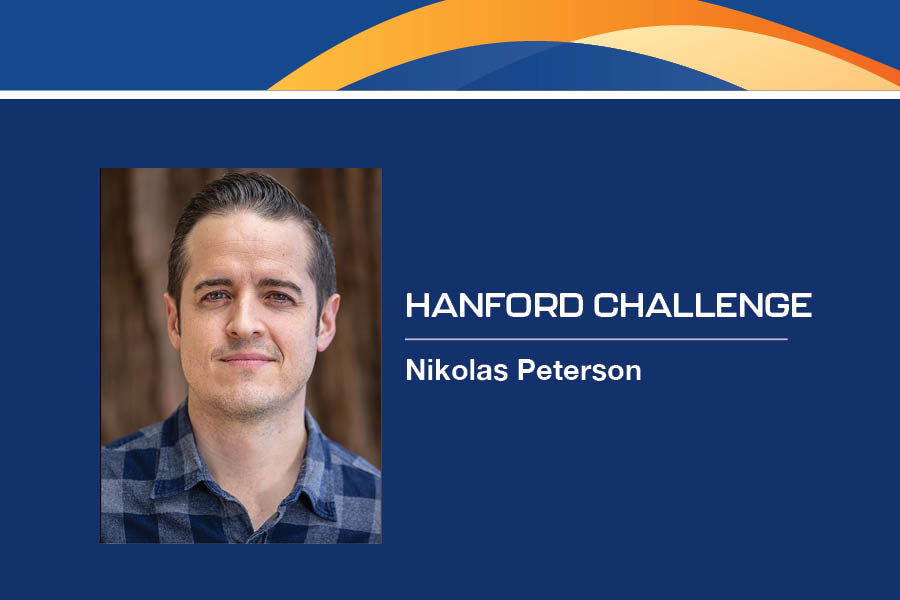
Home » Hanford watchdog strives to be an advocate for workers, the environment
Hanford 2024
Hanford watchdog strives to be an advocate for workers, the environment

April 15, 2024
By Nikolas Peterson
The Hanford nuclear site in Washington state is one of the most complex and contaminated cleanup sites in the world. The cleanup affects the health and security of millions of people, the quality and future availability of water resources, and the preservation and restoration of natural habitats and wildlife.
For more than four decades, Hanford produced plutonium for the U.S. nuclear weapons program, leaving behind a toxic legacy of radioactive and chemical waste that poses a serious threat to human health and the environment.
As such, the cleanup of Hanford is a massive undertaking that involves multiple federal and state agencies, contractors, tribes and stakeholders. It is also a costly and risky endeavor that requires careful oversight and accountability to ensure that the cleanup is done safely, effectively, and transparently.
That is where Hanford Challenge comes in. We are a nonprofit watchdog organization that works to secure a safe and effective cleanup of Hanford, protect the rights and health of Hanford workers, and promote a sustainable environmental legacy for future generations. Our board of directors and staff includes individuals from both sides of the Cascades.
Advocating for workers
We accomplish our mission by building relationships with workers and listening to them, advocating for their safety and well-being, providing them with legal representation and support, and generally by being a resource they can trust. Hanford workers are the backbone of the cleanup and the first line of defense against potential disasters. They deserve respect, protection and recognition for their vital role in safeguarding our nation and our environment.
We also monitor Hanford cleanup activities and progress, raise public awareness, improve engagement and hold the government and contractors accountable for their actions.
Our commitment to financial accountability has resulted in the return of hundreds of millions of dollars to taxpayers. Equally crucial, we have ensured that the federal government does not take shortcuts during the cleanup process, safeguarding the well-being of the community.
Over the past decade, Hanford Challenge has helped put an end to the cycle of toxic vapor exposures at tank farms. Through persistent advocacy and legal action, Hanford Challenge – along with UA Local 598 and the Washington State Attorney General – compelled the federal government to take decisive steps to improve safety protocols, enhance monitoring, and better protect workers.
We played a crucial role in championing the Hanford Presumption Law. This landmark law ensures that Hanford workers suffering from illness and disease receive just compensation. By advocating alongside workers for this fair treatment, we have positively impacted the lives of affected workers and their families.

Hanford Challenge staff stand in front of the “We All Live Downriver” campaign mural on the windows of the Patagonia Seattle building. From left: NikolasPeterson, executive director; Jeanna Deforeit, operations and developmentassistant; Britany Kee’ ya aa Eichman-Lindley, staff attorney; and Miya Burke,program manager.
| Hanford ChallengeEnsuring transparency
Hanford Challenge also closely monitors the U.S. Department of Energy’s actions to ensure transparency and adherence to cleanup plans. We advocate for thoroughness, safety, and long-term solutions when it comes to addressing Hanford’s legacy radioactive waste.
The biggest cleanup challenges this year will emerge from the outcome of holistic negotiations. The Department of Energy has been engaged in closed-door negotiations with state officials and the U.S. Environmental Protection Agency to revamp the cleanup plan. However, apprehensions persist that the compromises reached may jeopardize both the speed and quality of cleanup.
Looking beyond this year, Hanford cleanup faces several significant challenges. These include securing sufficient funding, assessing the effectiveness of the Waste Treatment Plant, and navigating the ongoing glass versus grout debate. Each of these items plays a critical role in shaping the future of cleanup.
The Hanford cleanup budget remains an annual hurdle. Until recently, each U.S. president has proposed significantly less funding for Hanford than what is necessary. This gap between proposed allocations and actual need poses persistent difficulties in managing the cleanup efforts. Adding to the complexity, Hanford’s cleanup timeline extends beyond that of all other Department of Energy cleanup sites. Therefore, Washington may find itself isolated in seeking funding from Congress to sustain cleanup efforts.
‘As good as glass’
The Waste Treatment Plant presents a huge challenge as we look ahead. Ideally, the plant will handle as much waste as possible. However, if the plant falls short of expectations, then we will face critical limitations. The consequences of an underperforming plant are stark: fewer options for dealing with dangerous nuclear waste stored in aging, leaking tanks.
Hanford Challenge is an advocate for glass immobilization (vitrification) as the preferred method for handling Hanford’s tank waste. Our longstanding litmus test is that any alternative tank waste immobilization technology must be “as good as glass.” When evaluating other treatment options, we must look at critical factors such as waste composition, treatment location, technical issues, cost savings, assumptions, and public involvement.
We don’t believe grout has met the “as-good-as-glass” standard yet. In addition, we believe current tank closure plans leave behind too much high-level waste in the tanks prior to filling them with grout. This is akin to a shallow land burial of nuclear waste – a detrimental outcome for the environment, the Columbia River, national security, and future generations.
Hanford Challenge is a proud advocate for justice, worker safety, and fiscal responsibility. Our successes continue to shape policies, protect workers, and safeguard the environment. Together, we will continue to forge a path toward a safer, more accountable Hanford cleanup that protects our water, wildlife and way of life in the Pacific Northwest and beyond.
Nikolas Peterson is executive director of Hanford Challenge.
Latest News Hanford
KEYWORDS April 2024





